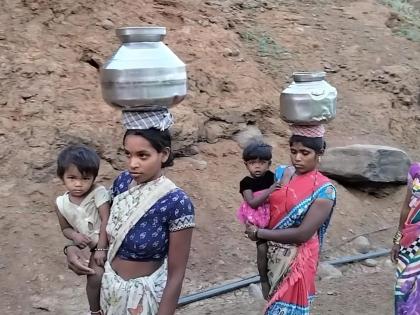Nashik Water Crisis: 115 Villages Depend on Tankers Despite Full Dams
By Chitra Rajguru | Updated: April 22, 2025 13:51 IST2025-04-22T13:51:02+5:302025-04-22T13:51:57+5:30
As summer heat rises, water scarcity has begun to grip rural parts of Nashik district, affecting thousands of residents. ...

Nashik Water Crisis: 115 Villages Depend on Tankers Despite Full Dams
As summer heat rises, water scarcity has begun to grip rural parts of Nashik district, affecting thousands of residents. Despite heavy rainfall and full dams during the monsoon, 115 villages and wadis across seven talukas are now dependent on water tankers for their daily needs.
According to a report by the Rural Water Supply Department, water is being supplied to 47 villages and 68 wadis using tankers. The situation is most critical in Yeola taluka, where 31 villages and 41 wadis—a total of 72 locations—are receiving water from 29 tankers.
Other affected areas include:
Malegaon taluka: 17 villages and wadis, supplied by 7 tankers
Sinnar taluka: 8 villages, 3 tankers
Surgana taluka: 3 villages, 3 tankers
Chandwad taluka: 2 villages, 2 tankers
Igatpuri taluka: 7 villages and wadis, 1 tanker
Deola taluka: Tanker supply ongoing
In a move to manage the crisis, the administration has acquired 16 private wells across different talukas to ensure continued tanker supply. The breakdown is as follows:
Malegaon: 7 wells
Yeola: 3 wells
Peth: 2 wells
Kalwan: 2 wells (for two villages)
Surgana and Deola: 1 well each
Currently, over 82,451 villagers are dependent on this emergency water supply system. Yeola alone accounts for 55,169 people, followed by 13,000 villagers in Malegaon.
Officials say that while water stock in reservoirs was satisfactory post-monsoon, the sudden rise in temperature and overdependence on groundwater has led to early shortages. The administration is closely monitoring the situation and planning further action to ensure water reaches all affected areas.
Open in app